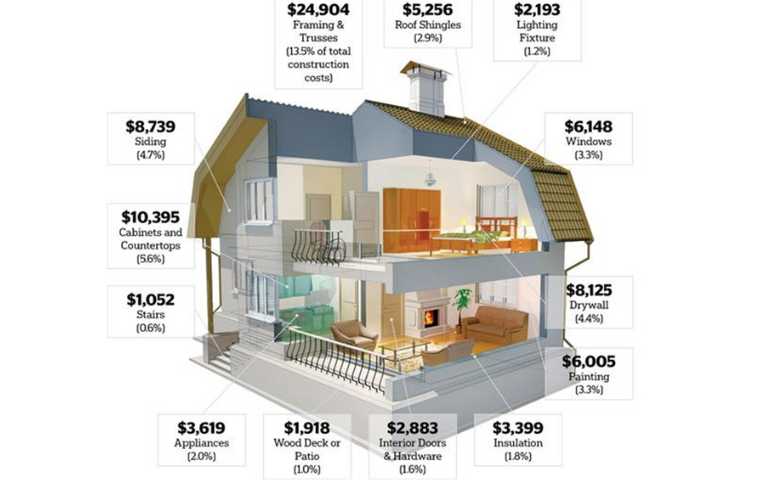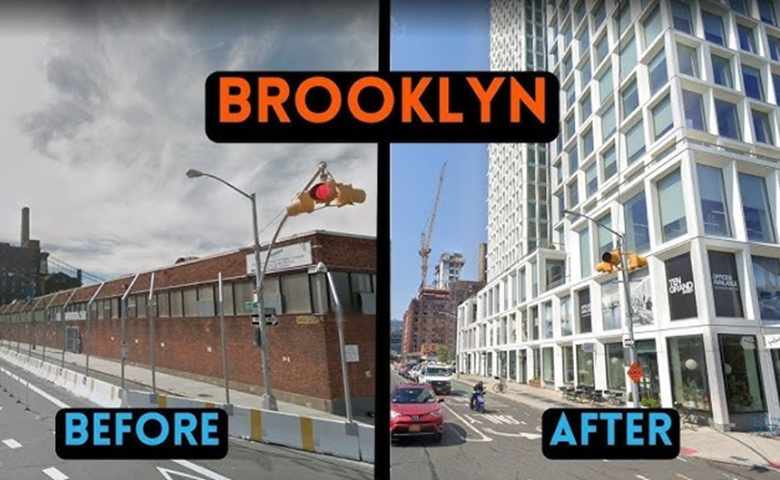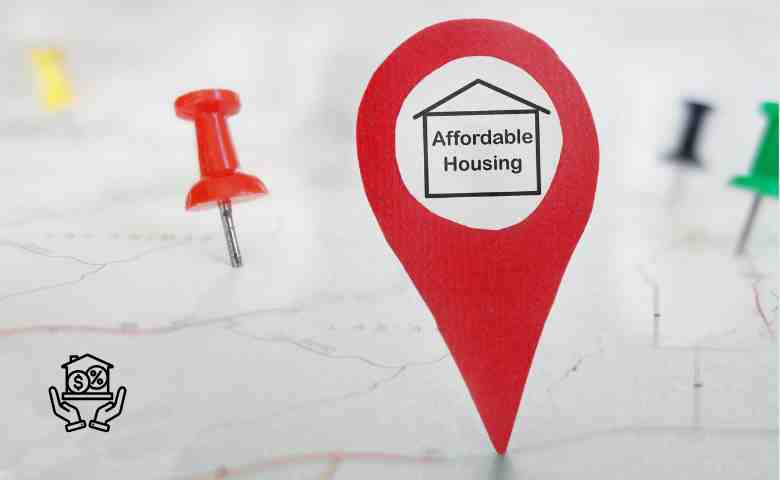Last Updated on March 5, 2025 by Admin
Affordable housing remains one of the most pressing issues worldwide, affecting millions of individuals and families. Rising construction costs, increasing demand, and limited government funding make it difficult to provide housing that meets the needs of low- and middle-income populations.
Many cities and communities face resistance to new affordable housing developments, further complicating the issue. Without effective intervention, housing insecurity will continue to rise, leading to social and economic instability.
Let’s explore the key challenges in affordable housing and learn potential solutions to address them.
Top 9 Housing Challenges and Their Solutions
1. High Construction Costs
The Problem:
Building new housing is expensive due to rising material costs, labor shortages, and regulatory requirements. For instance, from 2012 to 2019, land prices surged by 60%, significantly impacting overall development costs. Additionally, the COVID-19 pandemic led to a dramatic 17.5% increase in construction costs in 2021 compared to 2020.

Strict building codes, environmental regulations, and permit requirements also add to construction costs, delaying projects and making them less financially viable. As a result, the supply of affordable housing remains low, while demand continues to grow. Without cost-effective solutions, low-income families struggle to find safe and stable housing.
Potential Solutions:
- Prefabrication and modular construction: These methods reduce costs and shorten building timelines.
- Government incentives: Tax benefits and subsidies can encourage developers to invest in lower-cost housing.
- Streamlined regulations: Reducing bureaucratic delays and easing zoning restrictions can lower costs and speed up development.
- Home renovation and repair: Using home renovation services to update and restore existing buildings can provide a cost-effective alternative to new construction, making older homes safer, more energy-efficient, and accessible for low-income families.
2. Limited Availability of Land
The Problem:
In many urban areas, land is scarce and highly expensive, making it difficult to build new housing developments. Zoning laws often restrict the types of housing that can be built, limiting the potential for high-density developments.
Many cities have large portions of land allocated for single-family homes, preventing multi-unit housing from being developed in key locations. Additionally, available land is often located far from employment centers, increasing transportation costs for low-income workers. These factors contribute to a supply-demand imbalance, keeping housing prices high.
Potential Solutions:
- Zoning reform: Allowing mixed-use and high-density housing can increase supply.
- Repurposing vacant land and buildings: Underutilized properties, such as abandoned lots or old office buildings, can be converted into housing.
- Public-private partnerships: Cooperation between governments and private developers can make land more accessible for housing projects.
3. Rising Housing Prices and Gentrification
The Problem:
As property values rise, long-time residents are often priced out of their communities. Many urban areas experience gentrification, where new development and investment increase property values, pushing out lower-income residents.

While economic growth and infrastructure improvements are beneficial, they often lead to displacement for those who cannot afford the increasing rent or home prices. This forces people to move to less desirable areas with fewer job opportunities and services. Without proper interventions, economic inequality worsens, and cities lose cultural and economic diversity.
Potential Solutions:
- Affordable housing requirements: Policies can ensure that a portion of new developments remains within reach for lower-income residents.
- Community land trusts: Non-profit organizations can purchase and manage land to keep housing prices stable.
- Rent stabilization programs: Implementing measures to limit excessive rent increases can help prevent displacement.
4. Insufficient Government Support
The Problem:
Many governments lack the necessary funding to support large-scale affordable housing initiatives. Public housing programs often have long waiting lists, leaving many families without stable homes. Additionally, subsidies and assistance programs do not always keep pace with rising rent and property prices.
Bureaucratic inefficiencies and shifting political priorities further complicate the allocation of resources for housing projects. Without consistent public investment, many affordable housing efforts stall, leaving vulnerable populations without adequate shelter.
Potential Solutions:
- Increased public investment: Allocating more funds to housing programs can expand availability.
- Rental assistance programs: Expanding direct financial support to low-income renters can help them afford housing.
- Incentivizing private investment: Encouraging businesses to invest in affordable housing through tax incentives and grants can increase supply.
5. Homelessness and Housing Insecurity
The Problem:
Many individuals and families face housing insecurity due to a lack of affordable options. The rising cost of rent forces people to spend a significant portion of their income on housing, leaving little for food, healthcare, and other essentials. Those unable to afford stable housing may experience frequent relocations, couch surfing, or living in shelters.

Chronic homelessness is linked to mental health issues, substance abuse, and unemployment, making it difficult for people to reintegrate into society. Without proper support, homelessness and housing insecurity continue to rise, straining social services and public resources.
Potential Solutions:
- Supportive housing programs: Providing permanent housing with access to social services can reduce homelessness.
- More affordable rental units: Expanding housing supply with cost-effective rental options can prevent housing insecurity.
- Emergency assistance: Programs that offer financial relief for struggling renters can prevent evictions and homelessness.
6. Resistance from Local Communities (NIMBYism)
The Problem:
Many communities oppose the construction of affordable housing in their neighborhoods, a phenomenon known as “Not In My Backyard” (NIMBYism).

Residents may fear that affordable housing will lower property values, increase crime rates, or put a strain on local infrastructure and services. Some objections are rooted in misconceptions and stereotypes about the people who need affordable housing.
Legal battles and zoning restrictions driven by community opposition often delay or cancel much-needed projects. Without community support, affordable housing developments face significant hurdles in both approval and construction.
Potential Solutions:
- Community engagement and education: Informing residents about the benefits of affordable housing can dispel myths and reduce opposition.
- Incentives for host communities: Offering tax benefits, infrastructure improvements, or economic incentives can encourage acceptance of affordable housing.
- Balanced housing policies: Implementing inclusionary zoning that integrates affordable housing into mixed-income developments can create more socially cohesive neighborhoods.
7. Infrastructure Limitations
The Problem:
According to real estate experts, many areas with available land for affordable housing lack basic infrastructure such as roads, water, sewage systems, and public transportation. The absence of these essential services makes it costly and inefficient to develop housing in these locations.
Residents who move to these areas often struggle with limited access to jobs, schools, and healthcare facilities. Poor infrastructure can also lead to unsafe living conditions and environmental hazards. Without adequate investment, new housing developments may not provide the necessary quality of life for residents.
Potential Solutions:
- Government investment in infrastructure: Expanding public utilities and transportation networks to underserved areas can support housing development.
- Transit-oriented development: Placing affordable housing near existing public transportation can reduce costs for residents and increase accessibility.
- Public-private collaborations: Partnerships between governments and private firms can help fund infrastructure expansion in key areas.
8. Bureaucratic and Legal Barriers
The Problem:
Affordable housing projects often face long delays due to complex approval processes and legal challenges. Developers must obtain permits, meet extensive regulatory requirements, and navigate community opposition before construction can begin.
These bureaucratic hurdles increase costs and discourage investment in low-income housing. In some cases, outdated housing policies prevent the adoption of modern construction techniques that could reduce costs. Overly restrictive laws make it difficult to develop the necessary housing stock to meet demand.
Potential Solutions:
- Simplified permitting processes: Streamlining approvals for affordable housing projects can reduce delays.
- Reducing regulatory burdens: Adjusting building codes and zoning laws to accommodate innovative housing solutions can lower costs.
- Fast-track programs for affordable housing: Governments can prioritize and expedite permits for projects that meet affordability criteria.
9. Lack of Financial Access for Low-Income Buyers
The Problem:
Many low-income individuals struggle to secure financing to purchase a home. Strict mortgage requirements, high interest rates, and large down payments make homeownership unattainable for many families.
Without access to loans or credit-building resources, renters remain stuck in a cycle of paying high rents without accumulating wealth. The gap between wages and property prices continues to grow, reducing opportunities for homeownership. This limits financial stability and long-term economic mobility for lower-income households.
Potential Solutions:
- Affordable home loan programs: Governments and financial institutions can offer lower-interest loans and reduced down payment requirements for first-time buyers.
- Rent-to-own programs: Allowing tenants to gradually build equity in a property can help bridge the gap between renting and homeownership.
- Financial education and assistance: Providing resources to help individuals improve credit scores and save for a home can increase homeownership opportunities.
Conclusion
The lack of affordable housing is a complex issue influenced by economic, political, and social factors. While challenges exist, there are practical ways to address them. By reforming policies, encouraging investment, and adopting innovative construction techniques, communities can expand housing opportunities and provide more people with a stable and affordable place to live.
Author bio:
Anastasia Krivosheeva, Director of Business Relations at Estate Skyline, specializes in real estate and strategic partnerships. She builds strong connections, drives growth, and helps investors navigate the market.
Related Posts:
- Cost-Effective Home Improvements That Add Real Value To Your Property
- Attractive, Secure, and Budget-Friendly Gate Designs for Long Driveways
- Construction Jobs on the Rise in 2025: A Look at the Growing Opportunities
- Real Estate Industry: Career and Job Outlook [2025 Career Guide]


